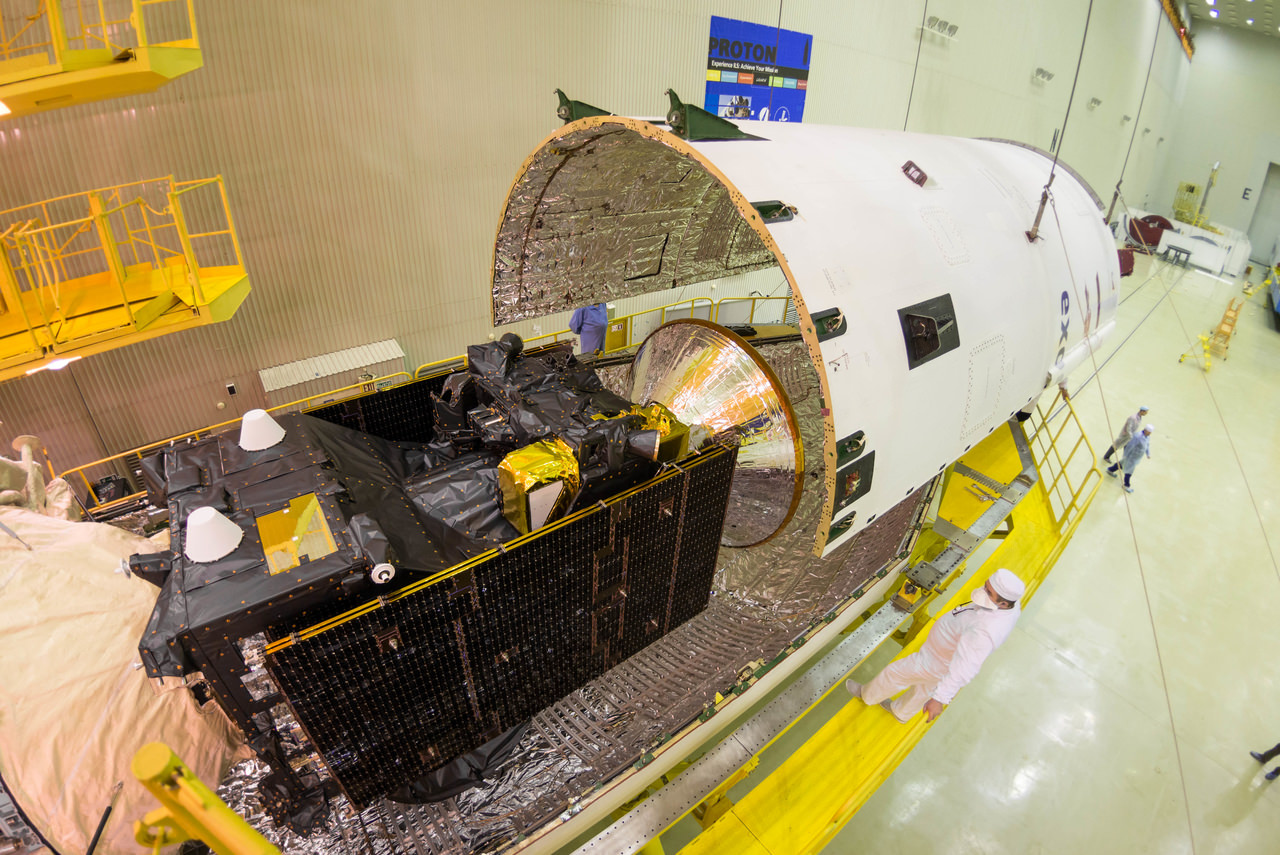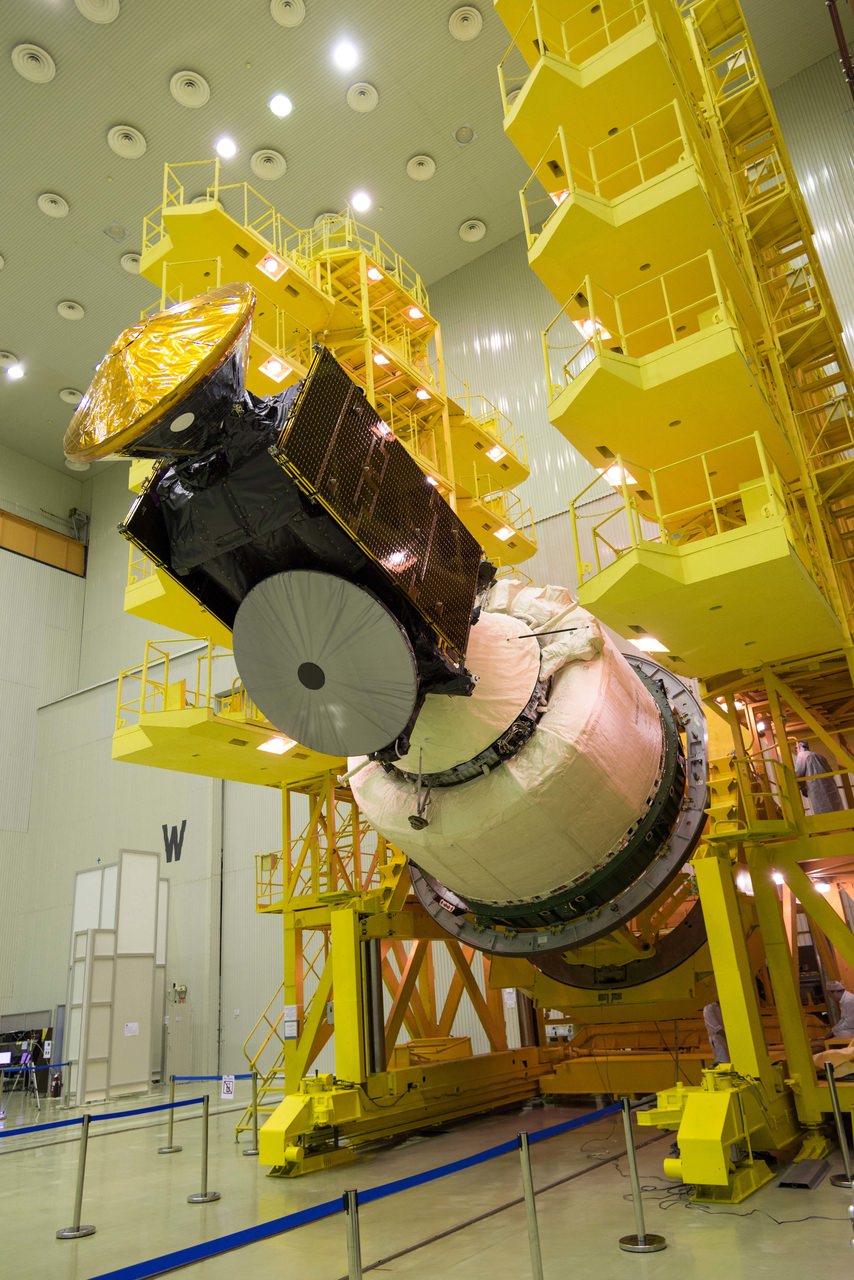
Final launch preparations are now in full swing for the ambitious European/Russian ExoMars 2016 spacecraft which has been encapsulated inside its payload launcher fairing and is slated to blast off for the Red Planet one week from now on March 14, 2016 from Kazakhstan.
On March 2, technicians working at the Baikonur Cosmodrome in Kazakhstan completed the complex multiday mating and enclosure operations of the composite ExoMars 2016 spacecraft to the launch vehicle adapter and the Breeze upper stage inside the nose cone.
The ExoMars 2016 mission is comprised of a pair of European spacecraft named the Trace Gas Orbiter (TGO) and the Schiaparelli lander, built and funded by the European Space Agency (ESA).
“The main objectives of this mission are to search for evidence of methane and other trace atmospheric gases that could be signatures of active biological or geological processes and to test key technologies in preparation for ESA’s contribution to subsequent missions to Mars,” says ESA.
2016’s lone mission to the Red Planet will launch atop a Russian Proton rocket.
The individual orbiter and lander spacecraft were recently mated at Baikonur on February 12.
To prepare for the encapsulation, engineers first tilted the spacecraft horizontally. Then they rolled the first fairing half underneath the spacecraft and Breeze on a track inside the Baikonur cleanroom.
Then they used an overhead crane to carefully lower the second fairing half and maneuver it into place from above to fully encapsulate the precious payload.

The 13.5 foot (4.1-meter) diameter payload fairing holding the ExoMars 2016 spacecraft and Breeze upper stage will next be mated to the Proton rocket and rolled out to the Baikonur launch pad.
The launch window extends until March 25.
The ExoMars 2016 TGO orbiter is equipped with a payload of four science instruments supplied by European and Russian scientists. It will investigate the source and precisely measure the quantity of the methane and other trace gases.

The 2016 lander will carry an international suite of science instruments and test European entry, descent and landing (EDL) technologies for the 2nd ExoMars mission in 2018.
The battery powered lander is expected to operate for up to eight days.
The 2018 ExoMars mission will deliver an advanced rover to the Red Planet’s surface.
It is equipped with the first ever deep driller that can collect samples to depths of 2 meters where the environment is shielded from the harsh conditions on the surface – namely the constant bombardment of cosmic radiation and the presence of strong oxidants like perchlorates that can destroy organic molecules.
ExoMars was originally a joint NASA/ESA project.
But thanks to hefty cuts to NASA’s budget by Washington DC politicians, NASA was forced to terminate the agencies involvement after several years of extremely detailed work and withdraw from participation as a full partner in the exciting ExoMars missions.
Thereafter Russia agreed to take NASA’s place and provide the much needed funding and rockets for the pair of launches in March 2016 and May 2018.
Stay tuned here for Ken’s continuing Earth and planetary science and human spaceflight news.

Bon voyage! ??????????? ????!
Two meters might be enough if what you want is to find microbes, but not enough if you go looking for fossils and ruins buried under thick geological strata that have piled up during hundreds of thousands of years, as I suggested here more than four years ago in a comment for a report titled “Opportunity Discovers Most Powerful Evidence Yet for Martian Liquid Water” (Dec. 11, 2011). For nearly half a century they’ve been scratching the soil like chicken to a ridiculous depth of 5 cm., and now Europe and Russia are planning on digging not much deeper. We need project managers who are bold enough to send very many bulldozers, dig trenches the way mining companies do all over a planet and develop the new science of Martian archaeology or exoarchaeology. Someone with acquaintances in the right places please tell them I’m available for the job.